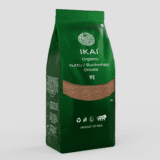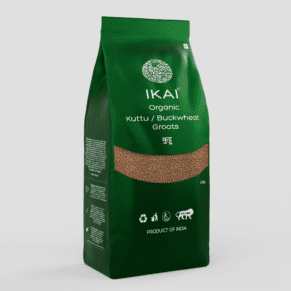Total ₹259.00
As an avid reader, I have often wondered how we arrived at the terms cherry-picking, going bananas, giving a fig, sour grapes, a bad apple, a lemon, like a ripe plum, and you’re a peach. For centuries fruits have been an integral part of our diet, culture, and linguistics. Suffice to say that in today’s times, fruits are amongst the few flavors left (pun intended) that bind the world as a community. So I am not exaggerating when I say, “a lot can happen over a fruit”.
Let me be honest. As a self-proclaimed fruit connoisseur (of sorts), I was thrilled to encounter Meghalaya pineapples gifted to me by my farmer friends from North East India. When it comes to chopping and slicing, I can match ‘Po’ the panda’s passion for Kung Fu.
Let me be honest. I have lived most of my life in Mumbai, traveled only occasionally (never been to North East India) and my skills in the kitchen are highly questionable. So when I saw this huffy looking pineapple, sword-like leaves et al, on my chopping board, I realized, I had hit a new low. I did not for the life of me know how to pick up the spiky bugger leave alone cut the juicy pine into shapely slices.
Pineapples are weird. They are known as ‘Ananas’(botanical name: Ananas Comosus)in just about every other language except English because someone in the 17th century thought it looked like a pinecone. A pineapple plant produces just one fruit in its lifetime. It takes approximately 2 years for a plant to grow and bear fruit. So what happens to the plant once it bears fruit? I am not spinning a yarn when I tell you that the stem and leaves of the plant are used for making fiber for textiles, accessories, and artifacts (read footnote below).
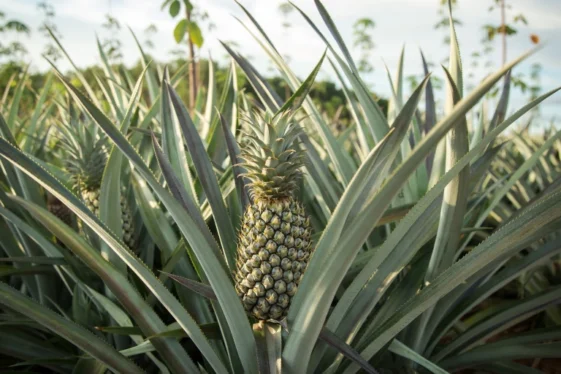
Contrary to common belief, a pineapple is not one entity but multiple fruits merged together. The spikes are actually ‘fruitlets’ or immature small fruits. This tropical delight that we associate mostly with Hawaiian theme parties, is actually a nutrition superstar.
Pineapples contain Bromelain, a protein-breaking enzyme used medicinally to treat bowel conditions, inflammation, sinuses, pulmonary edema, treatment of cancer, strengthening bones, improving oral health, boosting eye health, shortening labor and reducing body fat. For all its sweetness, it is surprisingly low in calories and makes for a healthy and tasty snack to fill up the in-between-meal hunger pangs. Pineapple is a rich source of manganese. And this could be where pineapple gets its reputation for fighting impotence.Manganese is well known as essential for the health of human libido, particularly for men.
But be warned. Your pineapple is eating you, as you eat it. Bromelain breaks down some of the soft tissue in your mouth. The only way you can prevent your mouth from getting that tingly sensation is by throwing your pineapple slice on a hot grill.
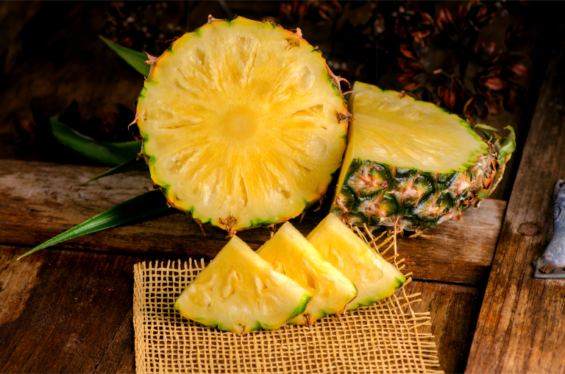
Which brings me back to the delicious looking giant fruit on my chopping board. An hour and several failed attempts later, I stood aghast with a bruised ego and a giant mess that I could make nothing of. So I sheepishly, relied on the juicer to save the day.
But I don’t give up that easily. So, several tutorials later I learned the
magic formula to slicing a pineapple. This is how you do it:
- Lay the pineapple on its side and cut off both the stem and the base off
- Stand the pineapple upright and slice off the skin cutting close to the edge (which is key, since the sweetest part of the pineapple is its outermost flesh)
- Once done, you will see a bunch of brown, thorny dots, called eyes, that need to be removed as well
- If you look carefully you can tell that the eyes line up in a spiral. Make V-shaped trenches along the spiral and remove the eyes.
- Lay the pineapple back on its side and cut it into slices
Voila! Your pineapple is ready to be devoured.
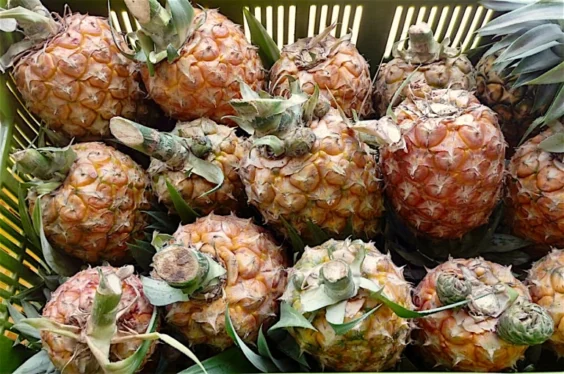
Interesting Facts:
- India is amongst the world’s top 10 largest producers of pineapples
- Meghalaya, Assam, Tripura, Manipur, Nagaland & Arunachal Pradesh jointly account for nearly half of India’s total pineapple produce
- North East India primarily grow 2 varieties of pineapples: Kew/Giant Kew (popular for processing & canning) and Queen (for direct consumption)
- The Queen Pineapple is the State Fruit of Tripura
- Tynrong (East Khasi Hills) in Meghalaya, the apex center for pineapple craft in India makes a fiber called Sohmarih from pineapple leaves and used to craft nets, artifacts, accessories, and fabric
- Natural pineapple fabrics are also a big rage across other Asian countries. For instance, the Philippines makes a fiber called Piña (literally meaning pineapple in Spanish) which is combined with silk or polyester to create fabric
- Pineapple leaves are also being used in the fashion world as a natural alternative to leather for making bags, shoes, and accessories.



